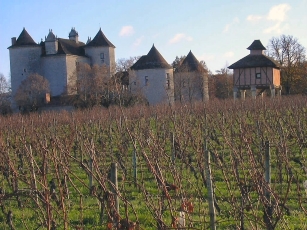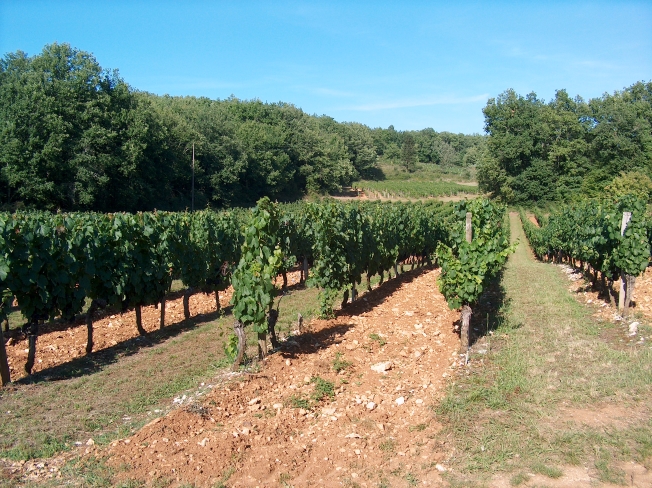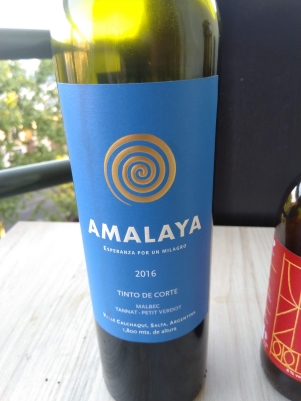Malbec, the grape that didn’t want to disappear
Since 2011, on the 17th of April of each year, people celebrate the Malbec grape variety around the world. The “Vino Argentino Bebida Naciona” (Argentina Wine) organization makes April 17 the Malbec World Day. So let’s take a few minutes to explore Malbec, which almost disappeared and was renewed and its history in the world.
Malbec grapes produce medium-sized with dark blue-black color berries. The grape clusters are relatively loose. It is part of the “cotoide” grape family. Malbec vines thrive in warm, dry climates and moderate to high-altitude regions (from 300m up to 1800m). They need intense sunlight and good temperature variations between day and night.

Malbec gives intense inky colored wine, with soft tannins and flavors around dried fruit, black currant, plums, and blackberries. The origin of this variety is not well known. What we know Malbec is the result of the crossbreeding between Prunelard and Magdeleine des Charentes. It could have been created during the Renaissance in Bourgogne or in the former Province du Quercy (covering the actual Lot department, in the South West).
Malbec was not the name of the grape at this time. This name didn’t even exist at this time! People used different names depending on local traditions, Auxerrois in the Quercy and Cahors region, Côt in Loire Valley (but also in the Quercy, to keep it simple). It can be called Plant de Cahors, Noir de Pressac, or Plant du Lot. There are more than a thousand synonyms. That can be a little confusing. But Côt (pronounced Coaat) seems to be the original one.

The variety that will be called Malbec, found its place in the Lot Valley, next to the City of Cahors. The Quercy region and particularly Cahors was reputed since the Middle Ages for the “Vin Noir” (Black Wine), a reference to the deep color of the wine. Pilgrims continuing their journey to Santiago de Compostela often have to transit in the region which made this wine famous in Europe.
There are different styles of wine in the Cahors region depending on where the vine grows. Around the Lot River, the soil gives supple and fruity wines. At a higher altitude (The Causse), the wines are more full-body with soft tannins.

The wine started to be exported to Bordeaux via the Lot River. And it’s in Bordeaux that Malbec gets the name we know. The vine was named after a merchant named Malbeck that helped the Bordeaux region to use this variety. This is how Malbec got its international name, Malbec. Just by removing a K of the man who introduces the vine in Bordeaux.
Malbec, become a part of the Bordeaux blend. Giving the wine more color and a suave texture. It start to be used in some parts of the Loire Valley where it was used for the Rosé d’Anjou, and in Touraine.
Malbec is also one of the two major export from the southwest of France to Argentina (the second one is Carlos Gardel, a tango singer born in Toulouse). In 1863, the wine expert Michel Piget was called in the Argentinan Mendoza region to modernize the local vineyard. He proposed to use Malbec (but also some other varieties like Tannat). Malbec was perfectly acclimatized to the mountains of the Andes Cordillera. Malbec was well-suited to the Andes Cordillera Mountain region, where it was able to thrive at high altitudes (Between 800 and 1500m, sometimes more).

Unfortunately, after a while, local grapes were more often used to produce simple table wine for local consumption. It is only in the 80s that Argentinian Malbec get more popularity and producer started to focus on quality. Local producers started to create more distinctive wines. It is not unusual to find Mendoza Malbec above 200 Euro today.And you can, now, find some interesting Natural wine Malbec, in Mendoza or elsewhere in Argentina.

Back in France, the Phylloxera crisis was almost fatal for Malbec, especially in Cahors. The grafting solution used elsewhere to get resistant roots to the insects did not work on calcareous soils. For Cahors, it was disastrous. They had to use some other varieties, before having a new graft that work in this particular soil.
After the Phylloxera crisis, come a climatic disaster, in 1956, frost destroyed 99% of the vineyard. Malbec almost disappeared from Bordeaux and Loire at this time. Despite the challenges faced by Cahors, the region has maintained a quality vineyard with a reduced superficies of 400 h.
Winemakers chose a path to quality, reduce yield, and soft winemaking to extract fruits, flavor, and soft tannins. That makes Cahors complex, with very digest red wines along with full-body wines. You can also find many natural winemakers. You can find the traditional full-body wine you can keep for years and funkier versions full of fruit. Now the vineyard is 4000 h. You can think it is little but it is 10% of the worldwide Malbec production.

The professional union of Cahors winemakers and the Wines of Argentina organization are now associated to promote this unique variety and all its expression. So this 17th of April, grab a glass of Malbec, Côt, Auxerois and celebrate this grape that didn’t want to disappear.
– You can find some natural Malbec wines from Cahors Craft Wine Asop wines And from Loire De Wijnwinkel